There seems to be a terrible confusion about Russian buckwheat blini which no-one talks about. Namely: the small round pancakes passed as blini in the West are not what I, as a Russian, call blini.
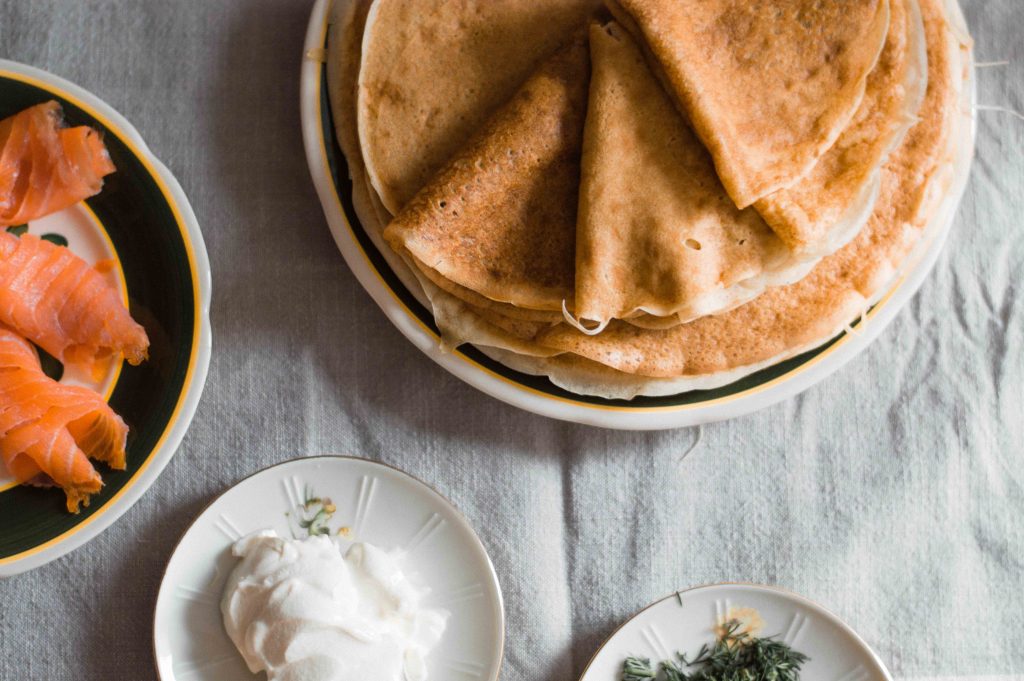
A quick Google search revealed that everyone from Martha Stewart to BBC to the New York Times promote this misunderstanding which is on par with people winking at me and saying “na zdoroviye!” before downing a shot of vodka. Please, don’t. It is grammatically incorrect and even if it was, Russians don’t say it.
Russian blini, buckwheat or not, are always bigger and thinner, similar to French crepes. You could call these little guys oladushki, but then oladushki are thicker and fluffier. To summarize, they are too little and fat to be called blini, but too thin to be called oladushki, so I’ve no idea what to call them.
I would like you to know that I do not discriminate pancakes — any pancake is a good pancake. You place a plate of blinchiki, crepes, dosa, blueberry pancakes, or naleśniki in front of me — it’s gone. I am sure Martha Stewart’s and the NYT buckwheat blini are absolutely delicious, they are just not blini.
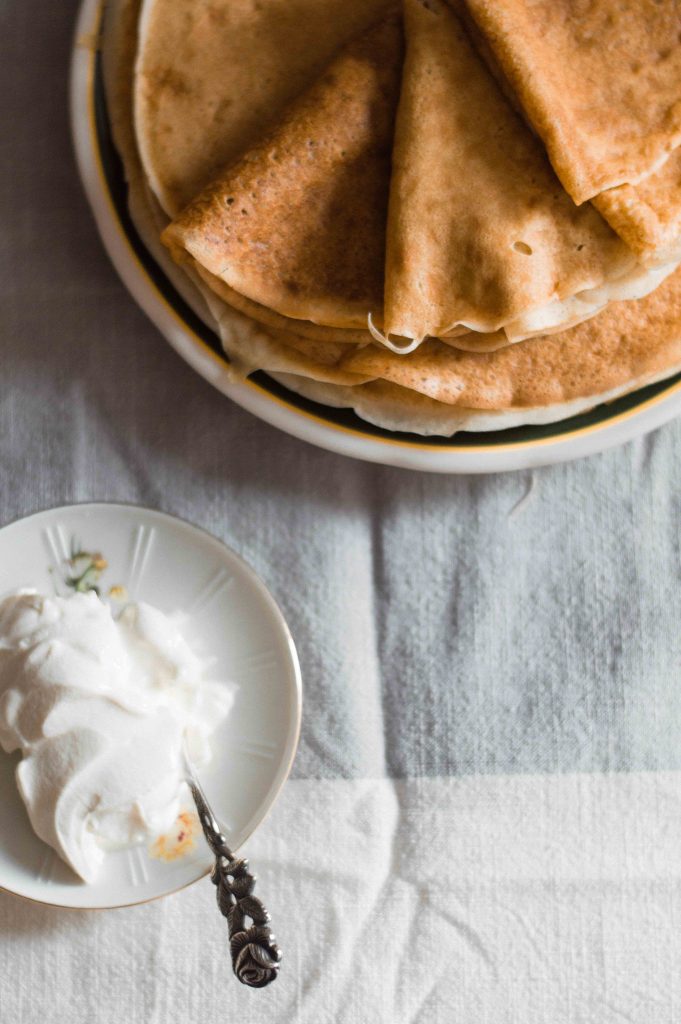
How to Make Buckwheat Blini
With that out of the way, we can finally talk about the cooking process. Although buckwheat blini are what’s been traditionally prepared in Russia, nowadays blini made with wheat flour are more popular. You can read all my tips and tricks for choosing the right pan and frying (or baking, as we say in Russia, although no actual baking is involved) the most perfect blin in this post.
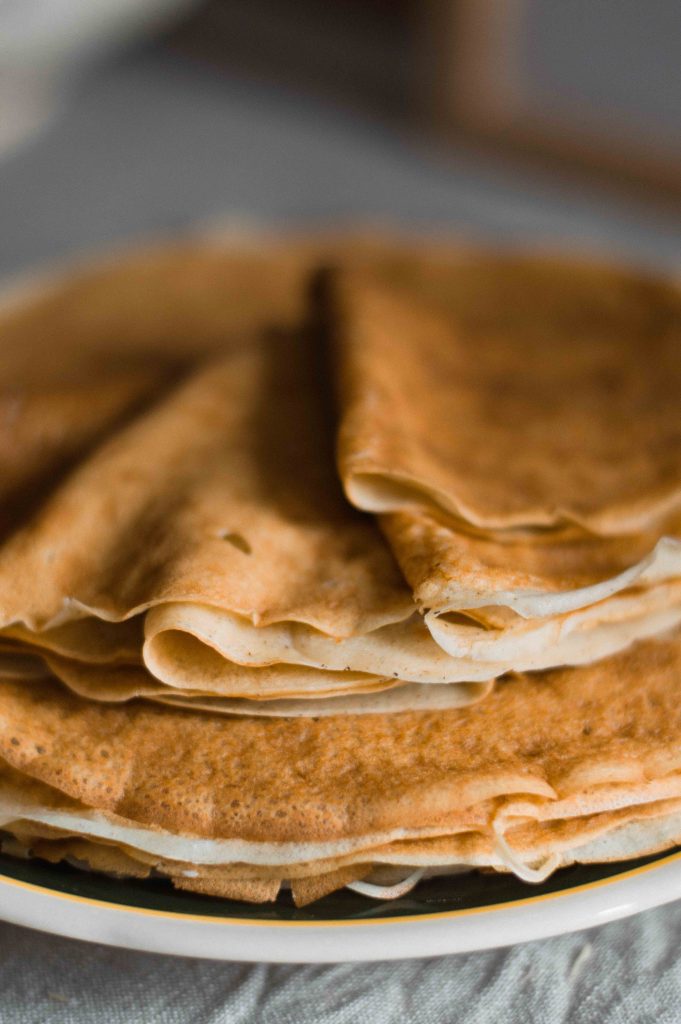
Blini na kefire means that the base for the batter is kefir. It’s common to specify how blini are made: na vode — with water, na moloke — with milk, na sivorotke — with whey. You can substitute buttermilk, if you cannot find kefir. Kefir just sounds that much more Russian.
And when it comes to the filling, I have to give it to the 99% of the buckwheat blini recipes out there: they might get the shape of blini wrong, but smoked salmon with sour creme (or crème fraîche) and dill are spot on.
Caviar also seems to make an appearance in many recipes. I’ll tell you a secret: Russians eat a lot less (if any) caviar than we are known for. It’s just too damn expensive. But if you can get your hands on some — go for it, be fancy! Just remember that when you stuff anything into blini, you should now call them blinchiki.
Buckwheat Blini “na Kefire”
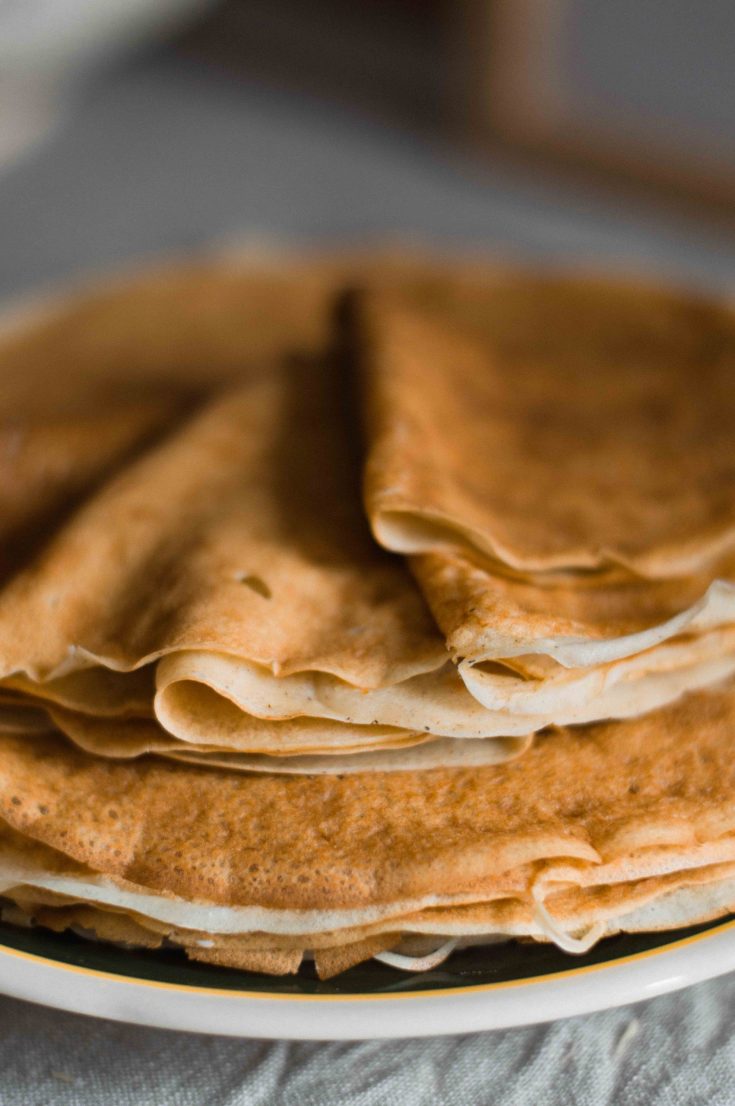
Russian buckwheat blini made with kefir and served with sour cream and salmon
Ingredients
- 130 grams (1 cup) buckwheat flour, sifted
- 130 grams (1 cup) wheat flour, sifted
- 1/4 teaspoon salt
- 2 tablespoons sugar
- 25 grams (2 tablespoons) butter
- 300 ml (1 cup + 4 tablespoons) kefir
- 3 large eggs
- 270 ml (1 cup + 2 tablespoons) water (+ up to 80 ml (5 tablespoons) water, optional — see notes)
- Butter for frying
- For serving: smoked salmon, sour cream (or crème fraîche) and a bunch of dill
Instructions
Mix both flours, salt and sugar in a bowl. Place a sauce pan with butter and kefir over low heat and warm it up until kefir is lukewarm and butter is melted.
Add kefir with melted butter to the dry ingredients and whisk together. Mix in the eggs, one at a time. Add 270 ml (1 cup + 2 tablespoons) water and whisk to get a smooth batter. If the mixture is still thick, add up to 80 ml (5 tablespoons) water, one tablespoon at a time to loosen it (see notes).
Strain the batter through a mesh sieve to remove any bits of undissolved flour. If you insert a spoon the batter should coat its surface, but run down easily.
Place a 24 cm (9.5 inch) pan over medium heat. Once hot, grease it with butter. Lift the pan with one hand and pour the batter into it with another. The trick is to use less batter than you think you need in order to get the thinnest blini. About 1/3 of a ladle should be enough. When the batter touches the hot surface of the pan start rotating your hand to spread the batter. Don’t worry if there are any holes — you can always fill them in with more batter.
Place the pan back on the stove and wait for about 1-1.5 minutes till the blin becomes golden brown on the bottom. Flip the blin with a spatula and fry for another 20-30 seconds or until the other side is also golden brown. Repeat with the rest of the batter. Place blini in a stack, on top of each other, so they stay warm. Serve immediately with sour cream, smoked salmon and dill. Or caviar, if you feel fancy.
Notes
I came across two different types of kefir here in Germany: one thin and runny that resembles buttermilk, another thick like yogurt. Depending on which one you are using, you might add a little more water in order to make the batter runny.
Start with 270 ml (1 cup + 2 tablespoons) water and if the batter still seems too thick, add up to 80 ml (5 tablespoons) water to loosen it. Don’t add more than that, since the blini will tear when you flip them (ask me how I know that).
For the ease of it, I recommend choosing thin kefir, if you can, that’s the one we have in Russia, anyways. You can also substitute buttermilk for kefir.







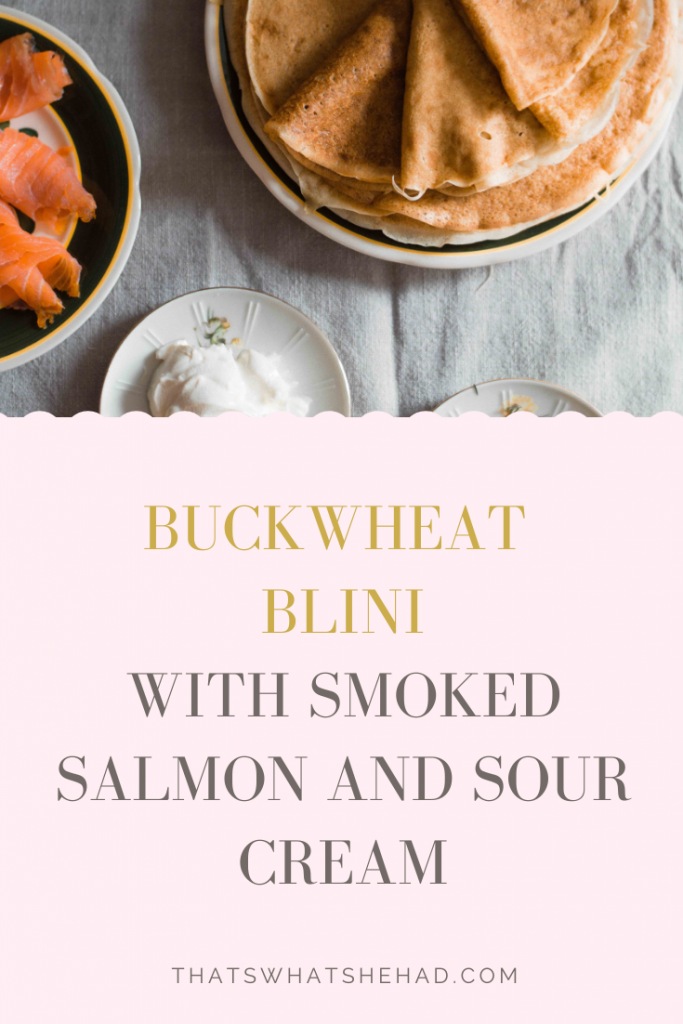

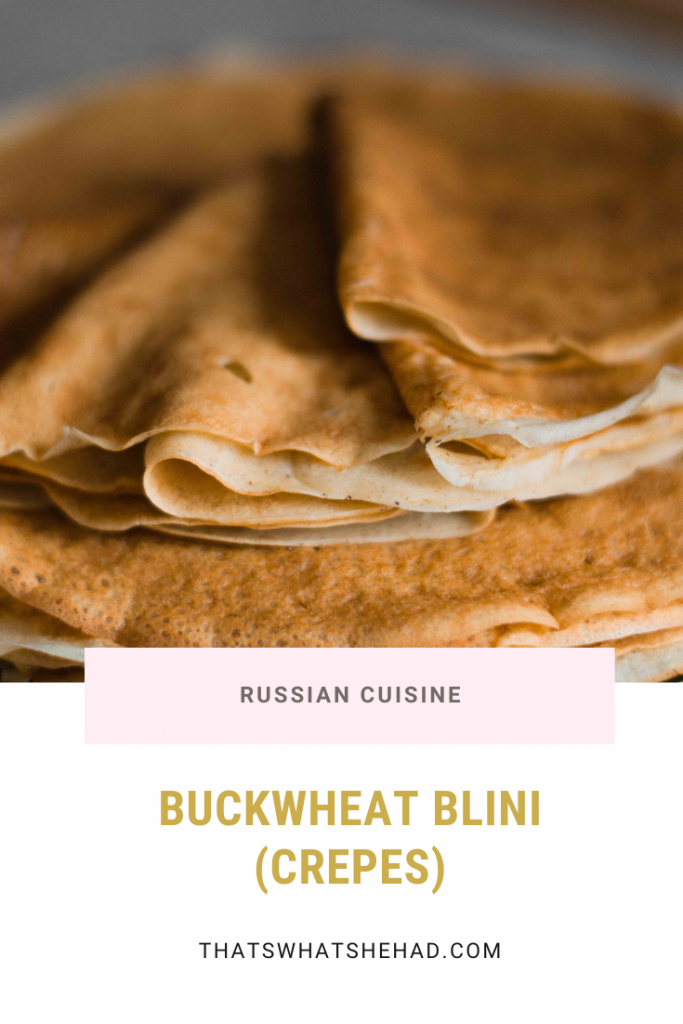
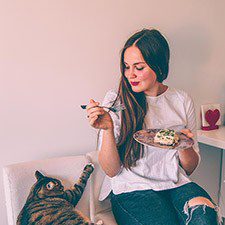
Hi Yulia, i just wanted to say I’ve been reading your blog for a little while and really enjoy it. I think i found it while searching for a pelmeni recipe (i used your dough recipe to make vareniki with cheese and they came out great!). I am also Russian but have lived in Australia since i was a child, and also have a young baby 🙂 so i really enjoy all your writing about the travels, food and motherhood, thank you!
Hi Lena!
Thank you for the kind words, you made my day, truly! So happy that the pelmeni dough worked for your vareniki and even happier that my writing resonates with you. As for buckwheat blini, it took me 6 tries to get them right, so I totally get you! Do let me know how it goes if you make them!
Ps. I also love pancakes and make Russian bliny a lot, but have not had success with buckwheat flour, might need to try this recipe!